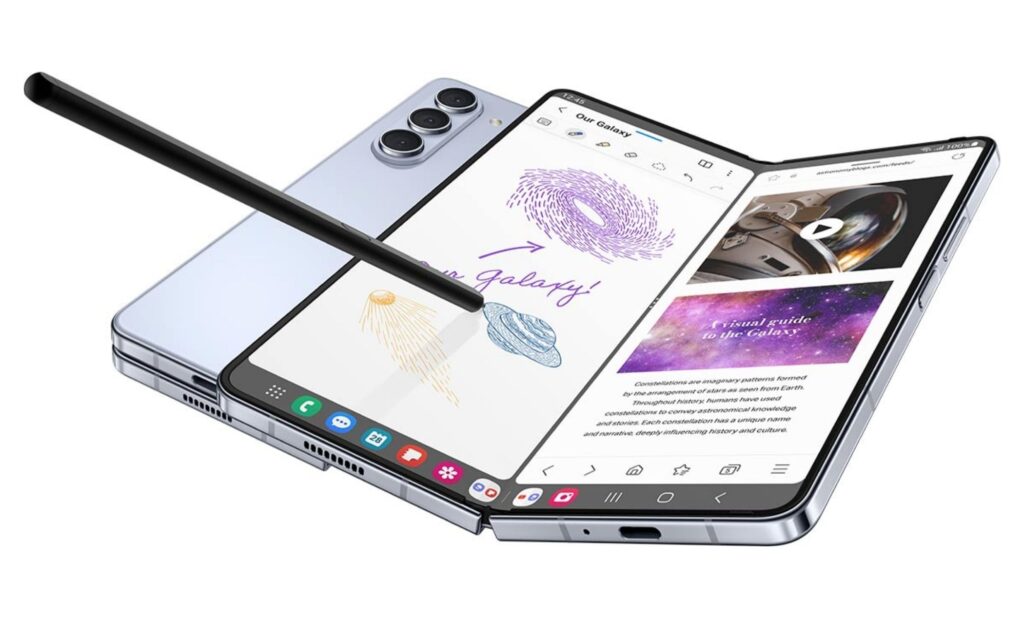samsung,s most expensive product, a global leader in technology and innovation, consistently pushes the boundaries of what’s possible. While they offer a wide range of products catering to various budgets, the company also crafts high-end devices and appliances that represent the pinnacle of their engineering and design prowess. These “halo” products often showcase the latest advancements and command a premium price tag, reflecting their exclusivity and groundbreaking features.
Samsung’s most expensive Product Categories:
- Luxury Home Appliances: Bespoke refrigerators (e.g., 23 cu. ft. Family Hub at $4,599) and ovens (e.g., Bespoke 30″ Microwave Combination Wall Oven at $5,249) with smart tech and customizable designs.
- Samsung’s most expensive foldable smartphones, like the rumored Galaxy Z Fold 6 Ultra (around ₹199,990) and expected Galaxy Z Fold 6 (₹200,999 for 1TB), uniquely combine portability with a large screen, featuring advanced displays and complex hinge mechanisms driving their high price.
- High-End Projector: The Premiere 4K Smart Triple Laser Projector ($6,799.98) for cinematic home entertainment with HDR10+ and AI upscaling.
Factors Driving the Premium Price of samsung,s most expensive product
Several factors contribute to the high cost of Samsung’s most expensive products:
- Cutting-Edge Technology: These products often incorporate the latest advancements in display technology, processing power, materials science, and artificial intelligence. The research and development behind these innovations are significant investments.
- Innovative Design of samsung most expensive product: Products like foldable phones require complex engineering and design to achieve their unique form factor and functionality. Luxury appliances often feature premium materials and customizable aesthetics.
- Exclusivity and Brand Positioning: High-end products reinforce Samsung’s image as a technology leader and cater to a discerning customer base willing to pay a premium for the best-in-class features and performance.
- Manufacturing Complexity: The intricate manufacturing processes involved in producing foldable displays, Micro LED panels, and advanced smart appliances can increase production costs.
- Feature-Rich Offerings: These products are typically packed with a wide array of advanced features and functionalities that go beyond standard offerings.
Conclusion: The Pursuit of Excellence
Samsung’s most expensive products are more than just gadgets or appliances; they represent the company’s relentless pursuit of technological excellence and design innovation. While they may be out of reach for many consumers, they offer a glimpse into the future of technology and showcase what’s possible when pushing the boundaries of engineering and imagination. These flagship offerings not only cater to a niche market but also drive innovation across Samsung’s entire product ecosystem, ultimately benefiting consumers at all price points.
What are your thoughts on Samsung’s high-end products? Which innovation excites you the most? Share your opinions in the comments below!
Okay, let’s break down the pros and cons of owning Samsung’s most expensive products, based on the article we just created.
Pros and Cons of Samsung’s Most Expensive Products
| Pros | Cons |
|---|---|
| Cutting-Edge Technology: Access to the latest innovations in displays, processing, and smart features. | High Cost: Significant financial investment required. |
| Innovative Design: Unique and often groundbreaking designs, like foldable displays. | Potential for Early Adoption Issues: New technologies might have unforeseen problems. |
| Premium Performance: Top-tier performance in areas like display quality, processing speed, and functionality. | Limited Accessibility: Exclusivity means they are not attainable for most consumers. |
| Feature-Rich: Packed with advanced features and functionalities not found in more affordable options. | Repair Costs: Repairs for complex technologies can be expensive. |
| Exclusivity and Status: Owning these products can offer a sense of exclusivity and reflect a high-end lifestyle. | Faster Depreciation: High-end electronics can depreciate in value relatively quickly. |
| Superior Build Quality: Often crafted with premium materials and meticulous attention to detail. | Potential for Overkill: Some advanced features might not be necessary for all users. |
| Enhanced User Experience: Designed to provide a seamless and premium user experience. | Bulkier or Less Practical Designs: Innovative designs like foldables can sometimes be less convenient in certain situations. |
| Future-Proofing (to some extent): Investing in the latest technology can offer a degree of future-proofing. | Software Updates: While generally good, the long-term software support for the absolute highest-end might eventually be prioritized less than mainstream devices. |

